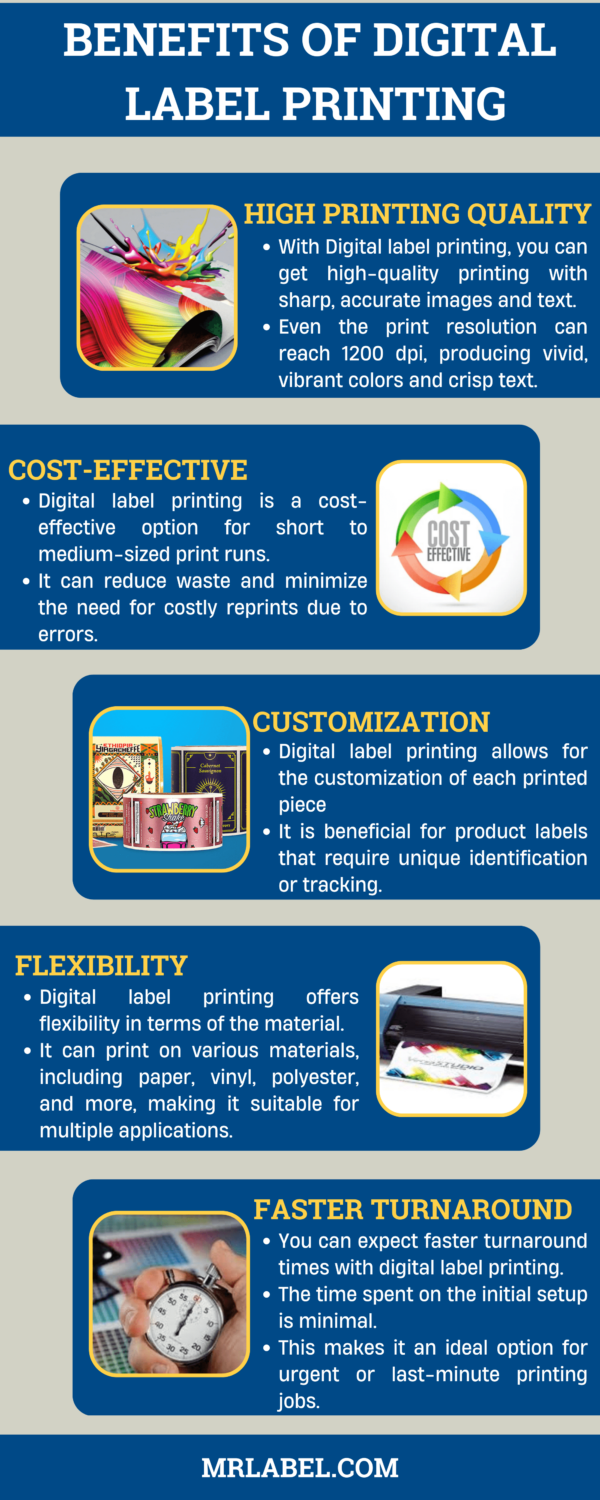The Basic Principles Of Digital Printing
The Basic Principles Of Digital Printing
Blog Article
Get This Report about Digital Printing
Table of ContentsSome Known Factual Statements About Digital Printing Digital Printing Fundamentals ExplainedDigital Printing Fundamentals ExplainedWhat Does Digital Printing Mean?Digital Printing Fundamentals Explained
Unlike traditional balanced out printing, which relies on mechanical processes, digital printing utilizes sophisticated modern technology to produce high-grade prints. One of the key advantages of electronic printing is its.The fluid ink or toner adheres evenly to the paper surface area, resulting in dynamic and true-to-life shades. Consistency is another substantial advantage used by digital printing. Unlike balanced out printing, where variations can happen as a result of elements like plate wear and ink density changes, digital printers continually provide top quality prints from the initial web page to the last.
Electronic printing enables for better versatility in terms of modification and customization. With variable data printing capacities, each published piece can be customized individually with distinct text, images, or designs without compromising top quality. Digital Printing. This degree of modification opens up brand-new possibilities for targeted marketing projects and individualized communication with customers

The Buzz on Digital Printing
With electronic printing, each print is generated individually based on demand. Conventional balanced out printing calls for comprehensive configuration time prior to manufacturing can begin.
These procedures consume both energy and time resources. In comparison, electronic printing has minimal configuration requirements. The process includes moving electronic documents directly to the printer without the requirement for plate prep work or color modifications. Consequently, much less power is eaten throughout arrangement, reducing ecological influence. Since digital printers do not require extensive workout times like their countered counterparts do, they eat less electrical power in general.
Digital printers use environmentally pleasant inks and toners that have lower degrees of unstable organic substances (VOCs) compared to conventional offset inks. VOCs are chemicals that add to air contamination when released into the ambience. Along with having reduced VOC web content, many digital printers also make use of water-based inks rather of oil-based ones discovered in offset printers.
The Only Guide to Digital Printing
Using green inks and toners in electronic printing makes sure that the printing procedure has actually a decreased influence on air high quality and advertises a much healthier working environment for printers and print shop workers. To conclude, electronic printing offers many benefits over traditional offset printing (Digital Printing). It is a cost-efficient solution that allows companies to conserve cash on printing expenditures
The faster turn-around times given by digital printing give companies the chance to satisfy limited target dates and react quickly to market click resources needs. One of the crucial benefits of digital printing is its improved adaptability and customization alternatives. This enables organizations to customize their printed materials according to their distinct requirements and choices.
A: Digital printing uses faster turnaround times given that it needs minimal arrangement and preparation compared to counter printers. A: Yes, digital printing is extra environment-friendly than offset printing as it lowers waste and eliminates the demand for chemicals typically used in standard methods.
Welcome the benefits of digital printing today and unlock its potential to enhance your advertising and marketing initiatives. Note: The above final thought section has been composed complying with the given guidelines for an expert conclusion on electronic printing machine. Please note that some asked for creating styles, such as slang, expressions, or colloquial language, might not be appropriate in this context.
Indicators on Digital Printing You Should Know
Offset and digital printing are both most popular printing methods for design tasks. The distinctions between them are considerable, from flexibility and waste to the cost proportion of longer or much shorter production runs. Conventional countered printing and digital printing are useful methods, each has advantages and drawbacks. Choosing the better printing process will inevitably depend on your project's specific demands.

The devices's set-up prices are high originally, additional units end up being fairly much less expensive as the amount boosts. Countered printing permits a wide variety top article of print materials to be used during production. It allows the printer Home Page to use different paper types, custom-made finishes, and numerous inks. The premium images created with balanced out printing make it the preferred approach, especially amongst visuals developers, when looking for the best shade recreation, information, and professional-looking prints.
Some Of Digital Printing
The essential printing technique continues to be countered. For electronic inkjet printing, ink is transferred directly onto the surface area. As opposed to counting on light weight aluminum plates and rubber coverings to transfer a photo, digital printing utilizes fluid ink during manufacturing. Traditional home inkjet printers are one of one of the most common electronic printing methods.

Report this page